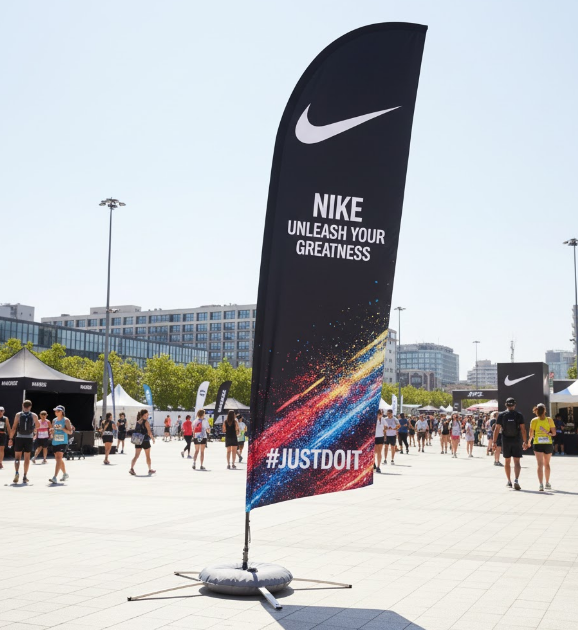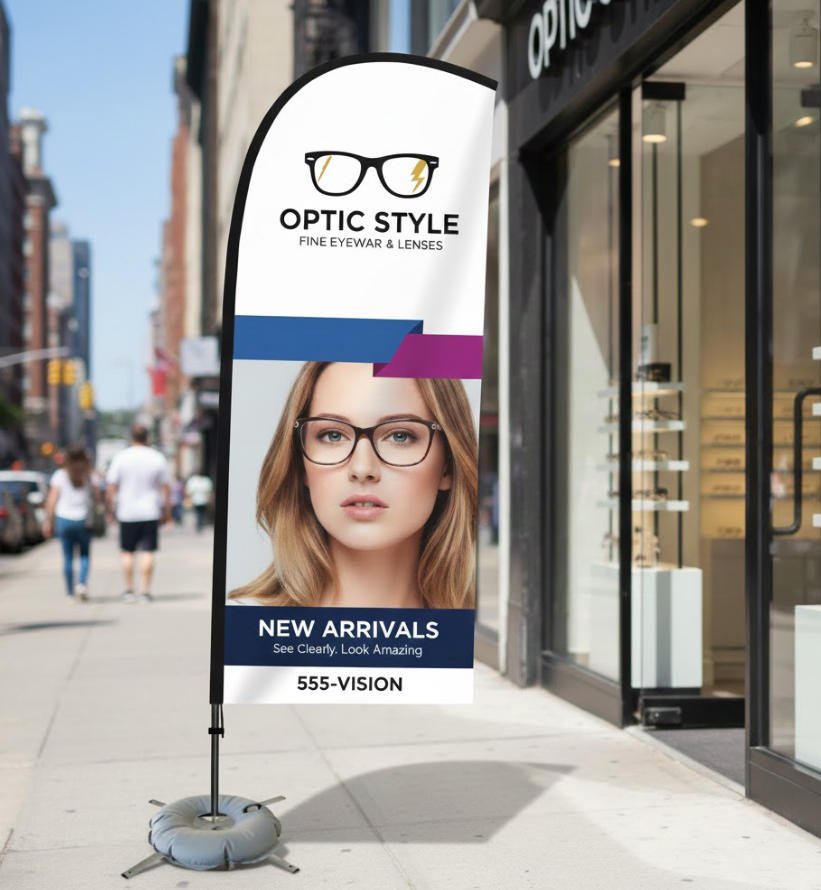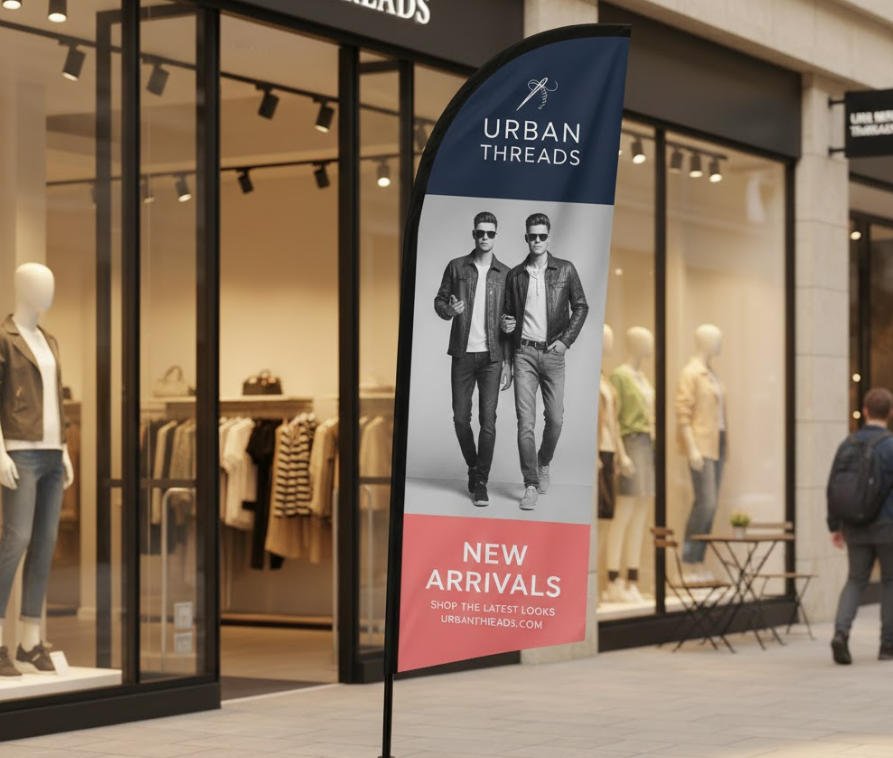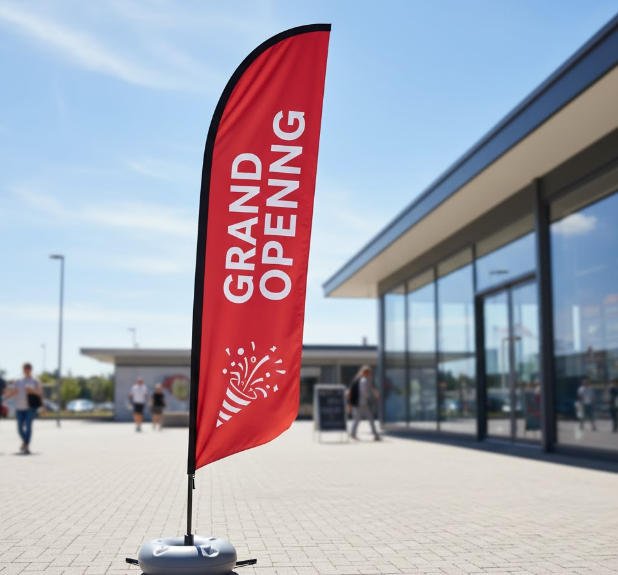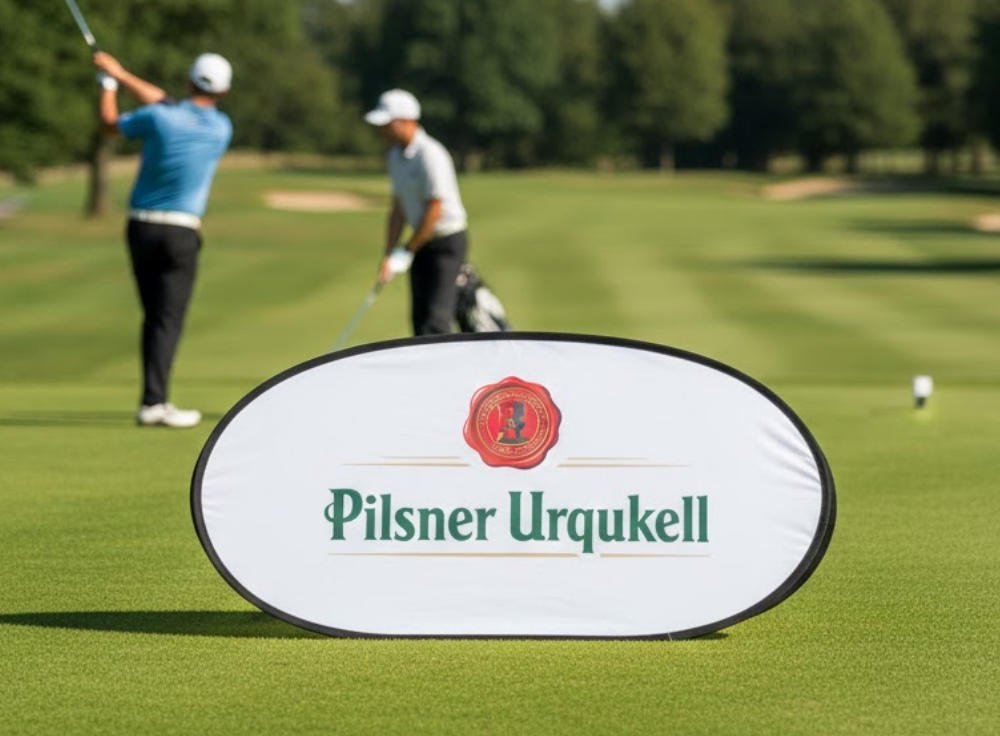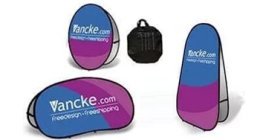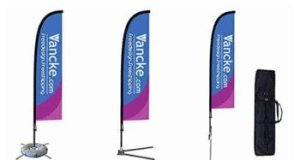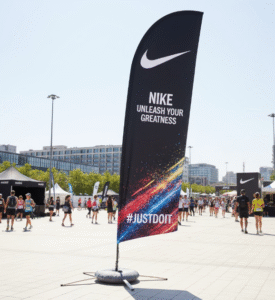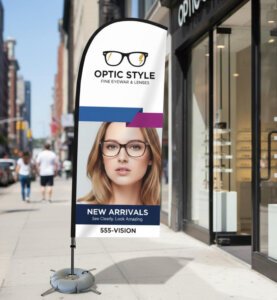Sponsorship banners are very important at sports events, especially when it comes to designing sponsorship banners for sports. They help brands connect with people in a strong way. A good banner does more than show a logo—it leaves a big impression. Research shows sponsorship spending grew from $500 million in the 1980s to over $65 billion in 2018. This shows how important it has become. Sponsorship now leads the market, making up two-thirds of all sponsorship activities. This highlights how designing sponsorship banners for sports can make brands more visible, improve their image, and change how people feel about them. By planning banners carefully, your brand can stand out in the crowd.
Understanding the Purpose of Sponsorship Banners
Making brands more visible at sports events
Sponsorship banners help people notice your brand at sports events. They show your logo and message to many viewers. For example, Coca-Cola’s work with FIFA made it more known worldwide. Emirates Airlines’ sponsorship of Arsenal and Real Madrid connected it to soccer fans globally. Below is a table showing how banners helped brands become more visible:
Brand | Case Study Description | Impact on Brand Visibility |
|---|---|---|
Coca-Cola | Partnered with FIFA, sponsoring big football events. | Better global visibility and stronger brand image. |
Emirates Airlines | Sponsored Arsenal and Real Madrid, showing logo to millions. | Linked brand to global soccer success. |
Red Bull | Invested in RB Leipzig and RB Salzburg, joining football culture. | 25% rise in brand recognition in Germany/Austria. |
Carlsberg | Sponsored Liverpool FC during tough times, showing loyalty. | 20% rise in brand love among Liverpool fans. |
Placing banners smartly makes sure people see them. This works in stadiums, on TV, or on social media.
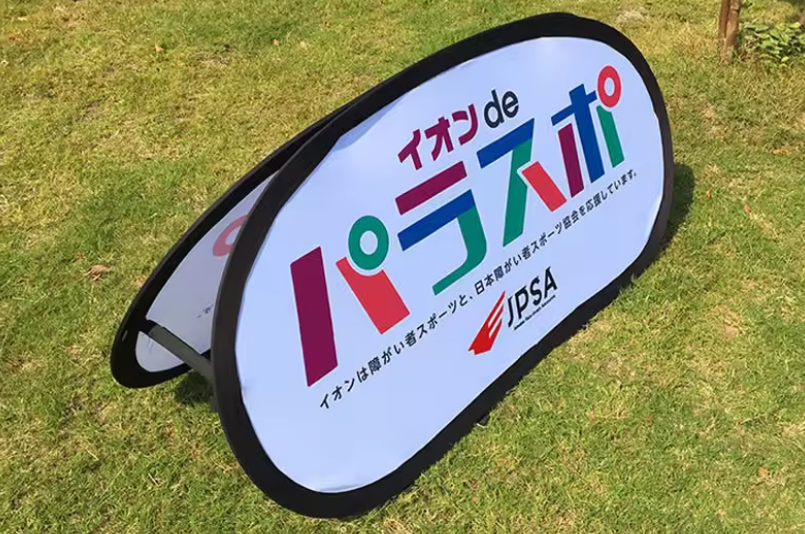
Creating designs that grab attention
A good banner design can catch people’s eyes and stay in their minds. Studies show fun designs make people interact more. You can check this by asking for feedback, tracking QR codes, or watching social media activity. Here’s how to measure engagement:
Ask people what they think about your banners using surveys.
Count how many people scan your QR codes.
Check social media shares and comments about your banners.
Creative designs can turn a simple banner into a great way to connect with people.
Helping with sponsorship goals and profits
Banners do more than make your brand seen; they help you earn money. For example, a sportswear company worked with a soccer team to sell more jerseys. They tracked sales to see how well the sponsorship worked. Financial results like revenue, visibility, and audience interest show how banners succeed. Here’s a table explaining these measures:
Metric Type | Description |
|---|---|
Tracks money earned from sponsorship activities. | |
Brand Visibility | Checks how much the sponsorship grows the brand’s presence. |
Audience Engagement | Measures how well the audience connects with the sponsorship. |
By matching banners with your marketing plans, you can make them work better and see clear results.
Key Design Elements for Sponsorship Banners
Placing logos to make your brand noticeable
Your logo is the main part of your banner. Put it where people will see it easily, like at the top or bottom corners. These spots catch attention and help your brand stand out.
A good logo placement makes your brand stronger. Studies show banners with well-placed logos, matching colors, and clear fonts score high in brand identity. This proves how important it is to place logos thoughtfully.
Make sure the logo size fits the banner. Don’t make it too small or too big. A balanced size keeps the logo clear without hiding other parts of the design.
Picking colors that grab attention
Colors affect how people feel about your brand. Choose colors that match the event or team to connect better with viewers.
Research shows matching brand colors with team colors makes people trust the sponsor more. This builds a stronger bond and encourages people to interact with your banner.
Use bright and contrasting colors to make your banner stand out. For example, red and white work well in stadiums. But don’t use too many colors, as it can make the design messy.
Using fonts that are easy to read
Fonts decide how simple your message is to read. Pick clean fonts like Arial or Helvetica that are easy to see from far away.
Make sure the text size is big enough to read clearly. Headlines should be bold, while smaller text should still be readable.
Keeping font styles consistent makes your banner look better. Studies show banners with balanced fonts score high in appeal and grab attention.
Don’t use fancy fonts or too much text. Keep your message short and clear. This helps people understand your brand quickly and easily.
Adding clear images and graphics
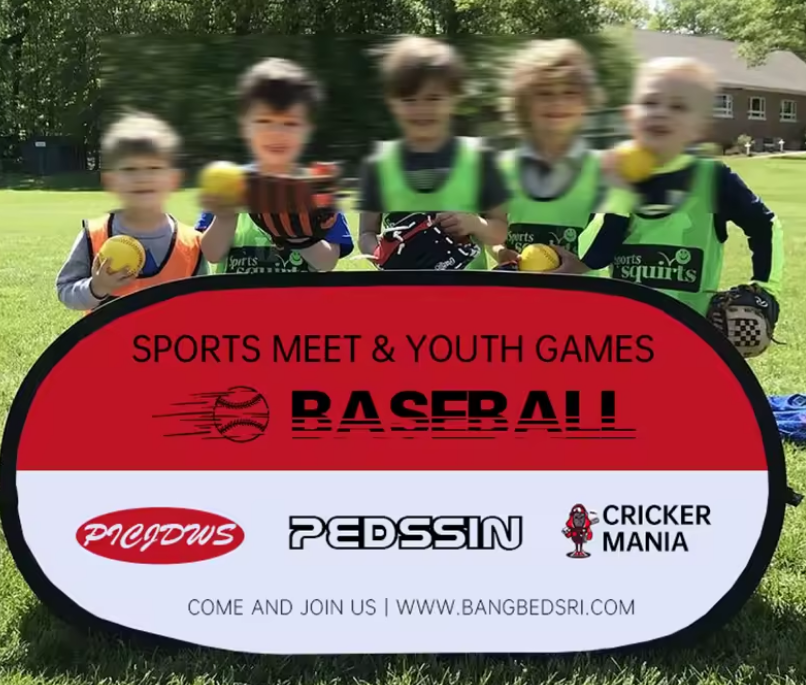
Using clear images and graphics makes banners more attractive. Pictures grab attention fast and share your message without much text. Pick images that are sharp and match the event. For example, a clear picture of a player or team logo connects with fans and shows your brand’s link to the event.
Graphics should match the design. Don’t add too many things to the banner. Use visuals smartly to show key details like your logo or a message. For instance, a simple trophy graphic or cheering crowd can bring excitement and fit the sports theme.
Make sure all images and graphics are high quality. Blurry pictures can hurt your brand’s image. Use vector graphics when possible, as they stay sharp at any size. Think about where the banner will be placed. A big stadium banner needs bold, clear visuals that look good from far away.
Tip: Check your banner by looking at it from different distances. This helps ensure your images and graphics stay clear and engaging for everyone.
Keeping the layout simple and neat
A simple layout helps your banner share its message clearly. Crowded designs confuse people and make the banner less effective. Follow these tips for a good layout:
Keep it Clear: Use a simple design and skip extra details. Focus on showing your logo and tagline.
Organize Well: Put the most important details, like your brand name, in easy-to-see spots.
Use Contrast: Pick colors that make text and pictures stand out. For example, white text on a dark background is easy to read.
Choose Easy Fonts: Use fonts that are simple to read from far away. Stick to one or two font styles for a clean look.
Stay Consistent: Match all design parts, like colors and fonts, with your brand style.
Keep It Simple: Don’t add too much text or too many pictures. A clean design is easier to understand.
Think about where the banner will go. A stadium wall banner should be wide, while a tall banner works better near doors. Always adjust your design to fit the space.
Note: A neat layout makes people notice your banner and shows your brand is professional. Take time to plan and test your design before finishing it.
Tailoring Sponsorship Banners for Sports Settings
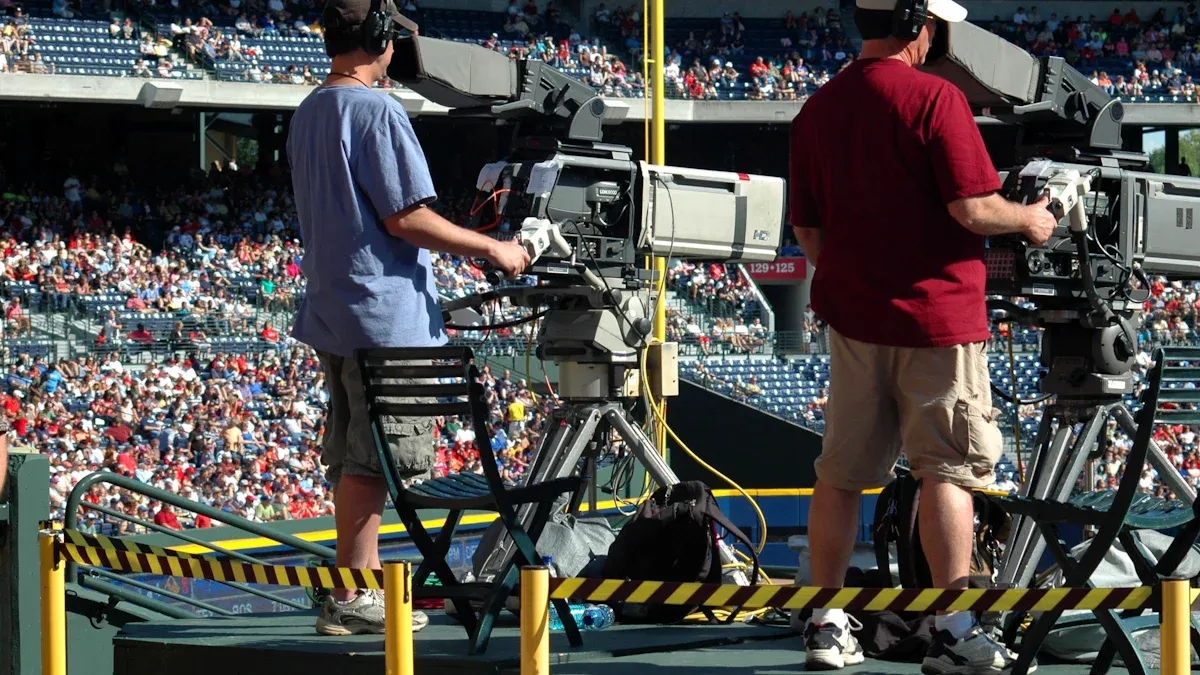
Designing for outdoor durability and weather resistance
When making sponsorship banners for sports, they must handle outdoor weather. Many sports events happen in open spaces, exposing banners to wind, rain, and sunlight. To keep them lasting longer, use materials made for outdoor use.
Pick strong polyester fabric with a flexible fiberglass frame. This keeps the banner steady, even in bad weather.
Choose weatherproof materials that resist light rain and wind. Use ground stakes or straps to hold banners in place on soft ground.
Add laminates or coatings to protect from sunlight, water, and dirt. These features help banners stay professional-looking during events.
Different materials work well for outdoor banners. For example:
Material Type | Key Features |
|---|---|
Vinyl | Waterproof, tear-resistant, comes in various thicknesses (13 oz to 18 oz). |
Mesh | Has tiny holes for airflow, reducing wind pressure. |
PVC-Coated Fabrics | Flexible and weatherproof, great for banners and canopies. |
Aluminum and Plastic | Lightweight, rust-free, and long-lasting for frames. |
Laminates and Coatings | Shields against sunlight, water, and dirt, improving durability. |
By picking the right materials and designs, your banners will stay strong and useful, even in tough outdoor conditions.
Ensuring visibility from various distances
Your banner needs to be seen clearly at sports events. Fans in the stands, people watching on TV, and those outside the venue should all notice it. To make this happen, focus on these tips:
Font Size and Style: Use big, bold letters that are easy to read. Simple fonts like Arial or Helvetica are best.
Color Contrast: Pick colors that stand out. For example, white text on a dark background is easy to see.
High-Quality Graphics: Use sharp pictures and vector graphics that stay clear, even from far away.
Where you place the banner also matters. A stadium wall banner should be wide, while one near a door should be tall and narrow. Test your banner by looking at it from different distances to make sure it’s clear for everyone.
Tip: Think about viewing angles. A banner seen from many directions reaches more people and makes a bigger impact.
Strategic placement for maximum exposure
Where you put your banner decides how many people notice it. Smart placement helps your message reach the right audience at the right time.
Move banners around to keep them noticeable.
Change banner spots during breaks to reach new viewers.
Place banners where fans and cameras focus, like near the field or behind goals.
Frame banners are flexible and can go almost anywhere on the field. Adjust their location based on where people gather. For example, banners near entrances or food stands catch fans’ attention as they walk by.
Sponsorship signs also link your brand to the event. Field banners, sideline signs, and logos on jerseys promote your brand to the audience, building a strong partnership with event organizers.
Note: Smart placement not only gets more eyes on your banner but also connects your brand closely with the event, making your sponsorship more valuable.
Changing designs for different sports settings

When making sponsorship banners for sports, think about each sport’s setting. Different venues have their own challenges and chances for creative designs. Adjusting your banners to fit these places makes them more effective.
Indoor Sports Arenas
Indoor arenas have controlled lights and smaller spaces. Use bright colors and strong contrasts to make banners pop under artificial lights. Avoid shiny materials that might glare under spotlights.
Hang banners from ceilings or place them on walls. Make sure they can be seen from different seats in the arena.
Tip: Test banners under indoor lights to check their brightness and clarity.
Outdoor Stadiums
Outdoor stadiums face sunlight, wind, and rain. Use tough materials like vinyl or mesh to keep banners lasting longer. Mesh works well in windy areas since it lets air pass through.
Big fonts and bold pictures are best for outdoor banners. They stay clear even from far away. Think about where the sun will be during the event to avoid shadows or glare on your banner.
Water Sports Venues
Places like pools or lakes have high humidity and splashes. Regular materials may not last here. Use waterproof and UV-protected materials to keep banners in good shape.
Place banners where they won’t get wet, like on fences or raised platforms. Bright designs with water themes can help your banner stand out while matching the venue.
Extreme Sports Locations
Extreme sports happen in unique spots like skate parks or snowy mountains. These places need strong and creative banners. Use tough materials that can handle rough use and bad weather.
Add bold colors and exciting graphics to match the energy of extreme sports. Place banners near ramps or rails where people will notice them during big moments.
Multi-Sport Events
Events like the Olympics have many sports and audiences. Your banners should work in different places. Use parts that can be changed or moved to fit various sports.
Keep designs simple and bold without focusing on one sport. This way, your banners appeal to everyone, no matter the sport.
Note: Always learn about the sport and venue before designing your banner. Adjusting to each setting helps your sponsorship stand out.
Common Mistakes in Designing Sponsorship Banners
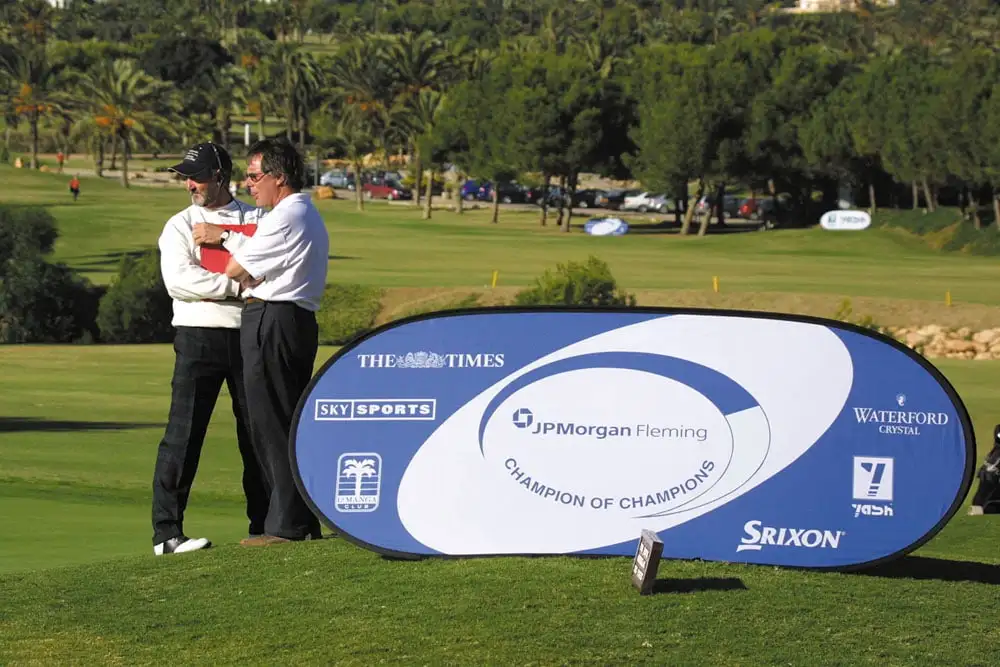
Adding too much information
Putting too much on your banner can confuse people. A messy design makes it hard to focus on your brand. Sports fans already see about 45 brands during a game. This overload makes it harder for them to notice your banner. Studies show a 14% yearly rise in visual clutter at big sports events. This means keeping your banner simple is very important.
Too much information can cause “banner blindness.” Only 14% of people notice cluttered ads. To fix this, stick to one clear message. Use fewer words and highlight your logo or tagline. A simple design helps your banner stand out in busy places.
Tip: Show your banner to others and ask if they understand it quickly. If not, make it simpler.
Choosing colors that don’t stand out
Bad color choices can make your banner hard to read. If the text blends into the background, people won’t notice it. For example, light text on a white background or dark text on black is hard to see. This mistake makes your banner less effective, especially in fast-moving sports events.
Pick colors that stand out from each other. For example, white text on dark blue or black text on yellow works well. Don’t use too many colors, as it can look messy. A bold and simple color scheme grabs attention better.
Note: Test your banner in different lighting to make sure it’s easy to read everywhere.
Forgetting what the audience likes
Not thinking about your audience can hurt your banner’s success. Knowing what your viewers like helps you design better banners. Good banners connect with the audience, making them notice your brand more. For example, sports fans often like bold designs that match the event’s energy.
Check how your banner performs by tracking views, clicks, and sales. Match your design to what the audience enjoys to make a stronger impact. A banner that fits their style will leave a good impression.
Tip: Learn about your audience before designing. Use their favorite colors, styles, and themes to create a banner they’ll enjoy.
Using blurry images or unclear graphics
Blurry pictures or unclear graphics can hurt your banner’s look. They make it seem unprofessional and fail to catch attention. People may think your brand is careless if your visuals are poor. A bad image can make viewers doubt your brand’s quality.
To fix this, always use sharp, high-quality pictures. Use images with at least 300 DPI (dots per inch) for clear visuals. Vector graphics are great because they stay sharp, no matter the size. For example, logos in SVG or EPS formats look good on any banner.
Here are ways to keep your images looking great:
Pick the right format: Use PNG or JPEG for photos and SVG for logos.
Don’t over-compress: Compressing too much can make images blurry.
Check before printing: Look at your design full-size to spot any issues.
Tip: Use original files, not random internet downloads. Stock photos or custom designs can make your banner look better.
Not testing banners in real settings
Making a banner on a computer isn’t enough. Without testing it in real places, it might not work well. Things like light, distance, and placement can change how it looks.
For example, a banner that looks bright on your screen might look too dark under stadium lights. Text that’s clear up close might be hard to read from far away. Testing helps you find and fix these problems early.
Here’s how to test your banner:
Try it in a similar place: Put the banner in a spot like the event venue.
Check from all angles: Make sure it’s easy to see from far and near.
Test for weather: See how outdoor banners handle sun, wind, or rain.
Note: Testing saves time and money by avoiding mistakes. It also makes sure your banner works well and looks great.
By using clear visuals and testing in real settings, your banner will impress your audience.
Tools and Resources for Designing Sponsorship Banners
Best software for creating banners
Good software helps make great sponsorship banners. These tools are easy to use and have helpful features. They include drag-and-drop tools, templates, and editing options. Below is a table comparing popular software based on user ratings and cost:
Software | User Rating | Score | Cost |
|---|---|---|---|
Snappa | 97% | 8.95 | N/A |
Rocketium | 100% | 8.95 | N/A |
Piktochart | 99% | 8.9 | N/A |
Canva | 98% | 9.4 | $12.99 |
Creatopy | 91% | 9.2 | $35 |
Viewst | 100% | 9.2 | $59 |
Qwikbanners | 100% | 9.2 | N/A |
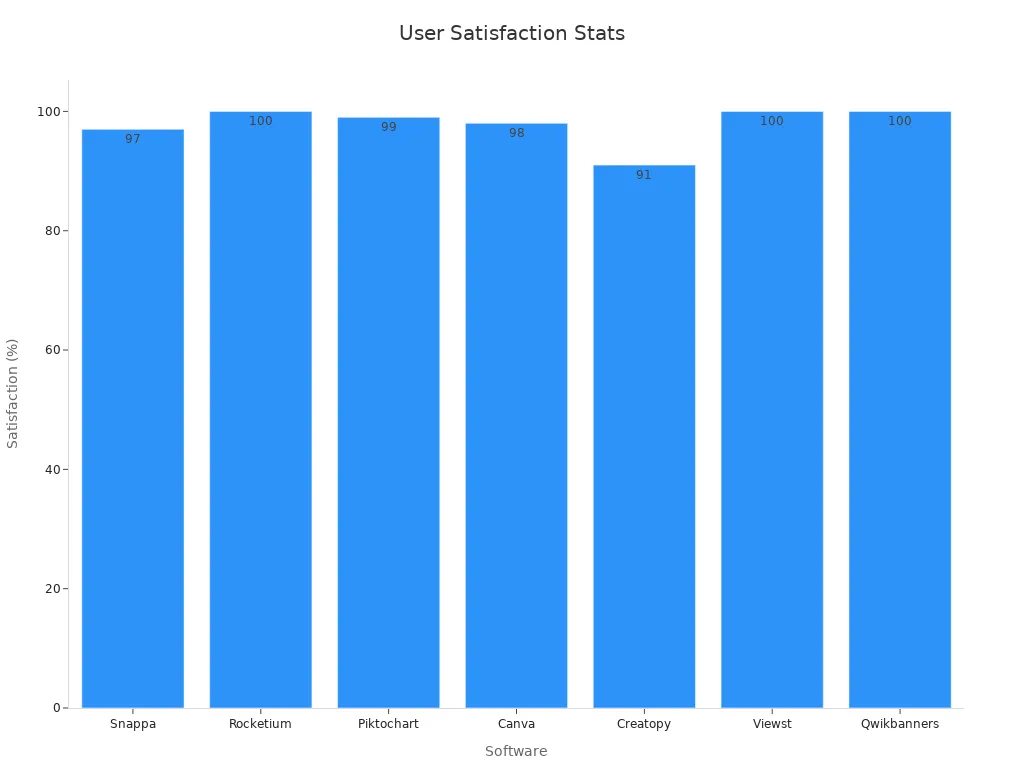
Canva and Piktochart are great for beginners. They are simple to use and affordable. For advanced features, try Creatopy or Viewst. Pick software that fits your budget and needs to create amazing designs.
Websites for templates and ideas
Online sites have many templates and ideas for sponsorship banners. These templates save time and help you make eye-catching designs. You can easily add your logo, colors, and text to them.
Benefits of using these templates include:
Personalization: Add your own pictures, text, and graphics.
Sharp Quality: Templates often have clear visuals printed at 1000 DPI.
Weatherproof: Many designs resist water and sunlight.
Flexible Use: Great for showing sponsors, promoting events, or boosting team pride.
Using templates makes your banners look better and keeps designs consistent. Sites like Canva and Snappa offer many sports-themed templates.
Hiring experts for custom banners
Sometimes, you need experts to make banners that stand out. Professional services can create designs that match your brand and event theme. They handle both design and printing, ensuring top quality.
These services are perfect for big events where banners must impress. They use strong materials like vinyl and mesh to last outdoors. They also offer unique shapes and sizes to make your banners noticeable.
Working with professionals saves time and ensures your banners meet high standards. Choose agencies with sports sponsorship experience for the best results.
Tips for working with designers or agencies
Teaming up with designers or agencies can improve your banners. Follow these simple tips to make the process easier:
Share Your Goals Clearly
Tell the designer what you want to achieve. Explain if the banner should boost brand visibility or excite fans. Show examples of designs you like to help them understand your ideas.Give Clear Brand Details
Share your logo, colors, and fonts with the designer. Let them know how your brand should look. This helps the banner match your brand style.Plan a Realistic Schedule
Allow enough time for the designer to do their best work. Rushing can cause mistakes. Talk about deadlines early and agree on a timeline that works for both of you.Ask for Previews and Changes
Request previews of the design before it’s finished. Check them carefully and give feedback. Don’t be afraid to ask for changes if needed. Working together makes the design better.Talk About Costs Early
Be honest about your budget. Designers can suggest ideas that fit your price range. Discuss costs for materials, printing, and other things upfront to avoid surprises.
Tip: Treat the designer as a partner, not just a worker. A good relationship builds trust and inspires creativity.
By following these tips, you can create banners that look great and support your sponsorship goals.
Making sponsorship banners for sports events is key to helping your brand get noticed and connect with people. Smart designs can bring big rewards like more visibility, better image, and loyal customers. The table below shows the main benefits:
Benefit | What It Means |
|---|---|
More brand visibility | Joining a popular event helps your brand reach many people. |
Better brand image | Linking with top sports or athletes makes your brand look good. |
New market access | Sponsorship opens doors to places where the sport has many fans. |
Loyal customers | Fans often like brands that support their favorite teams or players. |
Use these ideas and tools to make banners that stand out and boost your sponsorship success.

